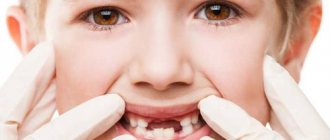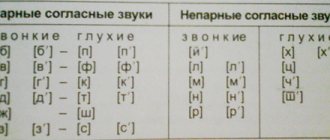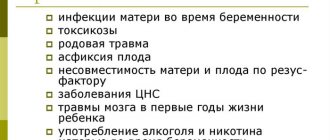A person’s calling card is his speech. Without a doubt, all parents want to see their child healthy, happy and successful. An important role in this is played by the child’s ability to speak correctly and beautifully.
Unfortunately, recently such a phenomenon as speech disorder has become very common. As statistics show, every third child of preschool age has some kind of speech defect. Of course, caring parents try their best to help their child. But how to do that? To do this, you must, at a minimum, have information. To this end, the article provides useful informative material.
The concept of abnormal manifestations of speech
General underdevelopment of speech (GSD) - it means a speech disorder when normally hearing children with preserved mental abilities have unacceptable and completely defective speech: from its sound to its meaning.
This concept was caused by a vital necessity and became firmly established in educational structures for children, in which speech therapy groups were formed. The term OHP was coined by the founder of Russian speech therapy, R. E. Levina (the levels of OHP according to Levina are given below).
Regardless of the origin of the defect, there are systemic complications of speech. Signs of a speech disorder:
- Speaking begins at approximately 3-5 years of age.
- Incorrect wording of words and phrases.
- Pronounced sounds are distorted.
- Incomprehensible conversation.
To distinguish between speech impairment, a speech therapist must conduct a thorough study of the disease of a particular child!
Level 1 grammatical and phonetic features
For conversation, children at this level use onomatopoeia supported by facial expressions and gestures, babbling and unclear sentences built on its basis, with unclear, distorted pronunciation. Also difficult to perceive:
- category of elementary prepositions (with, under, before...);
- grammatical differences between plural and singular;
- generic differences (ran - ran - ran);
- verb tense (does, will do, did);
- degrees of comparison of adjectives (strong - strongest).
The first level is far from perceiving the syllabic structure of a word. Children of the 1st speech level are characterized by a small volume of words of everyday content, pronounced in a babbling manner, truncated. For example: “amot” is a hippopotamus, “iska” is a hare. You can often hear non-existent words in children at an initial speech level - designations of some objects, feelings, actions. For example: “abuki” - boots. Such words can even refer to several objects. For example: “kesya” - candy, sugar, honey, favorite bear, fun. Here the word “kesya” denotes both the object “candy” and that which has a connection with it through associations of qualities: sweet, tasty, bringing joy, a state of pleasure.
Children at this level do not use morphological phenomena to build grammar. This means that the “phrase” consists of root words without the use of prefixes, suffixes and endings, depending on the situation. Such “phrases” can only be understood in the context of a specific situation; the child tries to describe it with a lack of vocabulary using gestures, facial expressions, exclamations, and onomatopoeia.
Classification of speech disorders (table)
The clinical-pedagogical and psychological-pedagogical classification makes an in-depth analysis of complications in the speech sphere, showing the problem from different sides. Thus, she paints a complete picture of this illness, which allows you to choose the best way to help.
| Clinical and pedagogical | Psychological and pedagogical |
| Speech background failure (external design) | Means of communication are disrupted |
|
|
| Defects in the construction of linguistic means and their significance | Communication difficulties |
|
|
R. E. Levina and her colleagues developed a unified pedagogical approach that made it possible to see the process of abnormal child development, taking into account certain indicators. The teacher systematized systemic speech disorders and substantiated a new method of organizing a system of corrective work to overcome them in preschoolers.
Diagnostics
The diagnosis of onr can only be made by conducting a comprehensive study. Diagnosis is carried out at an initial consultation with a speech therapist. The specialist establishes contact with the child, the parents must have medical reports from a neurologist, pediatrician, and the results of the studies. Having received all available information, the specialist studies and determines the speech status of his patient.
Speech therapy research is carried out in two stages - orientation and language examination. The orientation is carried out through a conversation with parents. This way, all the features of the course of the disease are clarified, what reasons accompanied it, and how the speech apparatus developed. The patient himself is also assessed - his ability to make contact, articulatory motor skills.
When examining the language and its components, the formation of speech, its coherence, grammar, and vocabulary are determined. In the case of the presence of OHP of the first degree, there is a gross underdevelopment of all components of the language system, which is explained by the child’s lack of commonly used speech. After this, the specialist can draw up his conclusion and establish the clinical form of the pathology of the speech apparatus.
Recommended speech therapy examination
It is worth studying in detail the vocabulary of a person suffering from OPD. This will allow you to assess the ability to correlate a word with a specific subject. This is done in several steps:
- Selection of material, divided into individual lexical topics. This determines the child’s ability to communicate with the people around him.
- Pictures with objects are offered.
- Pictures with names of body parts are used.
- Selection of synonyms for the selected word.
During the diagnosis, the speech therapist must give his conclusion, which indicates the level of speech development, the clinical picture, the degree of OHP, and also draw up a plan for correcting the identified disorders.
Definition of speech anomaly
ONR often occurs in the following syndromes: dysarthria, rhinolalia, alalia, aphasia. Based on this, 3 groups are distinguished:
- Uncomplicated forms of OCD (slight impairment of brain function is observed).
- Complicated forms of OPD (those with mental personality disorders or pathological changes in the development of the central nervous system).
- Severe speech pathology (when the functioning of the parts of the brain responsible for speech is disrupted).
When it becomes clear what form of anomaly the baby has, the level of speech skills is determined.
2nd level of speech development, features of psychological perception
Children begin to use speech to communicate with peers. A conversation with adults is started for an educational purpose, and children try and want to be understood, and adults try to observe various norms of language when answering a question. Conversations with peers are structured differently. Kids show each other objects, phenomena, actions and express their opinions on this matter. Moreover, they do not care about being understood. At this age, what a child says to a child is by default perceived as heard and understood. The conversation can be conducted in different forms, depending on the emotional perception of the interlocutor. This could be a game, an explanation, or an emotional outburst. Also, the child often accompanies any of his actions with speech. At the third level of development, more and more active and passive words appear in the child’s speech, and the rudiments of understanding the grammatical properties of the language continue to form.
Determining the level of speech development of a child
Typically, all patients with general speech underdevelopment always have a malfunction in the articulatory and auditory systems. Also, their lexical arsenal contains a small number of words.
OHP levels and their characteristics
First level. There are practically no words. The passive vocabulary is very small. There is no understanding of the meaning of most words. In everyday life there are either babbling words or syllables of an onomatopoeic nature, one-word sentences used situationally (gestures and facial expressions are used). More often, only sound combinations consisting of 1-2 syllables are inherited. A gross violation of the perception of the system of meaningful sounds and the syllabic structure of words. The articulatory system malfunctions, sounds constantly change places, and, unfortunately, children are not able to pronounce many of them.
Second level. First attempts at coherent speech. Although babbling and gestures are still present, words appear, albeit distorted, but already constant, which are in general use. The vocabulary is still poor. Syllables are rearranged. Simple sentences appear with 2-3 words. The sounds are defective, often mixed and replace each other.
Third level. Children actively use expanded speech, but mostly use simple constructions. The volume of the dictionary is noticeably expanding: almost all parts of speech are used. Sound pronunciation and phonemic processes still do not fit into the norm, but there are fewer violations.
The fourth level (according to Filicheva). Characterized by minor deficiencies in phonetics, vocabulary and grammar. All these violations are not clearly expressed: the structure of syllables of words (complex), the joint work of the speech organs and the process of receiving and transforming sound information, changing and forming words are disrupted. This level of speech underdevelopment can only be detected through a thorough examination of the child by a speech therapist.
It is very important to detect possible disorders in your baby in time in order to prevent or eliminate them!
Reasons for OHP
The causes of OHP are mainly problems during pregnancy or childbirth, as well as in the first years of the baby’s life. The most basic reasons for OHP:
- infectious diseases of the mother during pregnancy;
- toxicosis;
- birth injury;
- asphyxia, hypoxia;
- incompatibility of mother and child by Rh factor;
- disorders in the central nervous system;
- head injuries of a baby in his first years of life;
- the influence of nicotine, alcohol, drugs;
- deprivation.
Pathogenesis
OHP should be considered as a systemic disorder that affects language subsystems, that is:
- phonetic-phonemic;
- grammar;
- lexical;
- semantics.
Level 1 OHP in a child causes him to lag behind accepted age norms. This happens across the entire spectrum of indicators, both quantitative and qualitative. Such children have disturbances in the general course of speech development, the timing, and the order in which they master articulatory skills. Experts compare general speech development with linguistic infantility.
The very mechanism of the appearance and development of general speech impairment has a close connection with primary speech defects and their direct causes. In the presence of disorders of cerebral-organic origin, such as alalia or aphasia, severe speech disorder may occur, as well as misunderstanding of the speech of others.
Grammar, phonetics, word creation, semantic content at the 3rd level
The child’s vocabulary at the 3rd level of speech development is replenished; it already includes words naming the qualities of objects, actions and phenomena. At this stage, all parts of speech can be traced in children’s speech, but sometimes their functions are not meaningful. The child expresses himself in sentences, sometimes even complex ones, if the category of function of conjunctions and allied words is mastered. If not, then when you try to express yourself in a complex sentence with a cause-and-effect relationship, you get a similar construction: “I didn’t draw, ... I lost my pencil.”
Difficulties at this stage can still be caused by grammatical changes in word form and word formation. But the tense category of the verb, the case change of nouns, adjectives and numerals are already realized. The category of gender has been mastered, but difficulties may arise if you do not know which gender a particular word belongs to. For example: “Today I saw such a beautiful snowstorm, it circled and circled!” This shows ignorance of the gender of the word “blizzard”. Errors in accent persist. For example: “poured water.”
During this period, difficulties may still arise with the pronunciation of individual sounds (hissing, sonorant, whistling). Syllable division is recognized by ear by many children, but only as an intuitive rhythmic division of a word.
The child may already be able to compose stories based on pictures with a brief description of the qualities, shape, size, and color of objects.
Correction of general speech underdevelopment
The correction program depends on the cause of the disease. For example, if OHP has developed against the background of dysarthria, you first need to eliminate problems that are associated with the innervation of the speech apparatus; for sensory alalia - to develop phonemic hearing.
In any case, treatment is carried out in a complex manner. In case of speech underdevelopment of levels 1–2, a speech therapist and a neuropsychologist or neurologist work with a small patient.
Doctors carry out correctional work in several directions at once:
- Develop imitative activity. The baby repeats sounds that he heard earlier;
- Train hand motor skills. The development of speech also depends on the dexterity of small hands. Specialists conduct classes with the baby that develop coordination of speech with movement, general and fine motor skills;
- They train the articulatory apparatus - the muscles of the lips, tongue, cheeks. This is facilitated by speech therapy exercises, articulation and breathing exercises.
The program also includes exercises for memory training and development of speech understanding. The goals of the lessons depend on the degree of impairment.
Correction of OHP in children of the 1st level
The goal is to teach the child to understand speech addressed to him, to activate the baby’s independent speech activity, memory, thinking and attention. The grammatical component of speech is important. But the phonetic design does not matter yet.
Correction of level 2 violation
The goal is to develop speech activity in the baby, teach him to understand speech, teach phrasal speech, and work on sound pronunciation (sounds that the child pronounces incorrectly or does not speak at all).
In case of ODD in children of 1st - 2nd degree, education is possible only in specialized schools for children with severe speech development disorders.
Correction of level 3 violation
The goal is to develop coherent speech in the child, improve its lexical and grammatical components, and consolidate the correct pronunciation of sounds and phonemic perception. At this stage, it is important to prepare the baby to master literacy. Children with this diagnosis study in correctional classes at a regular school.
Correction of level 4 violation
The goal is to bring the child’s speech to the age norm so that he does not have problems with learning at school. The speech therapist pays attention to improving and consolidating correct sound pronunciation, lexico-grammatical and phonemic components of speech. The speech therapist develops developed phrasal speech and grapho-motor skills, and also teaches the child the basics of writing and reading. Children with speech impairments of the 4th degree study in regular classes.
In addition to speech therapy work, a neurologist can prescribe drug therapy, transcranial magnetic stimulation, massage, and treatment with an osteopath.
Work on speech development at level 3
A child at this stage can usually listen well to short stories from children's literature, fairy tales, and poems. Also, 4-5 year olds already like to retell what someone has read out loud. Reading will help enrich your vocabulary and master the algorithm for grammatically correct construction of phrases and sentences. Retelling, especially from pictures, is already an attempt to apply grammatical, word-formation and lexical norms in practice.
Coming up with poems based on two or four rhymes, role-playing conversations on behalf of toys or fictional characters - all this will help the child understand the ways of constructing speech depending on the situation. To work out the classification of words according to one or more criteria, working with cards with images of animals, products, furniture, things, and seasons will help.
To better master the morphological side of language, a child needs to pay his attention to endings associated with gender, case, and tense. Make it clear that there are parts of a word that serve to form many words.
At level 3, you can already introduce simple phrases. The time for tongue twisters will come at level 4.
Grammar, phonetics, vocabulary level 4
The judgments of a child at level 4 of speech development are logical and formed into complex sentences. The grammatical structures are harmonious, but sometimes have distortions. The child uses all parts of speech, is not fully aware of their purpose, masters declination, changes in numbers, gender, tenses quite well in speech practice, and begins to use degrees of comparison.
The sound system may still be imperfect, especially when changing baby teeth. Speech is already quite harmonious, but unclear pronunciation of sounds may be observed, which is why the effect of blurred words is recognized.
Syllable division is already perceived visually, which signals the child’s readiness to begin mastering the phonetic basics of the language.
The child learns many new words and often tries to guess their meaning from the context. As a result, the semantic content of the word is not fully mastered, which will later become noticeable when constructing your own statements using these words. For example: “The plane took off high into the sky and flew to the moon!” The child has only learned that the plane flies, but does not know the full characteristics of its properties.







